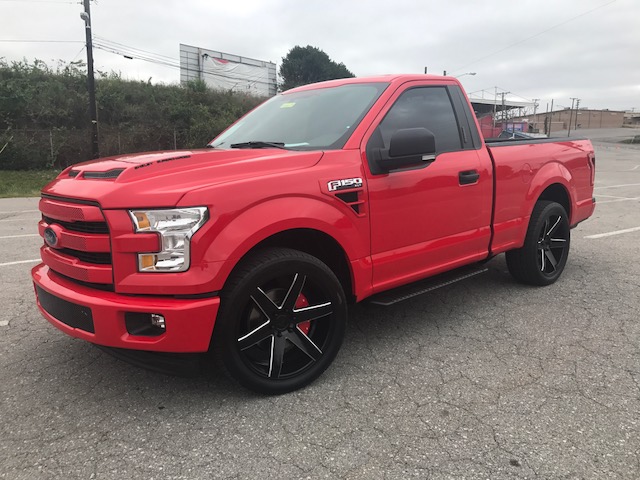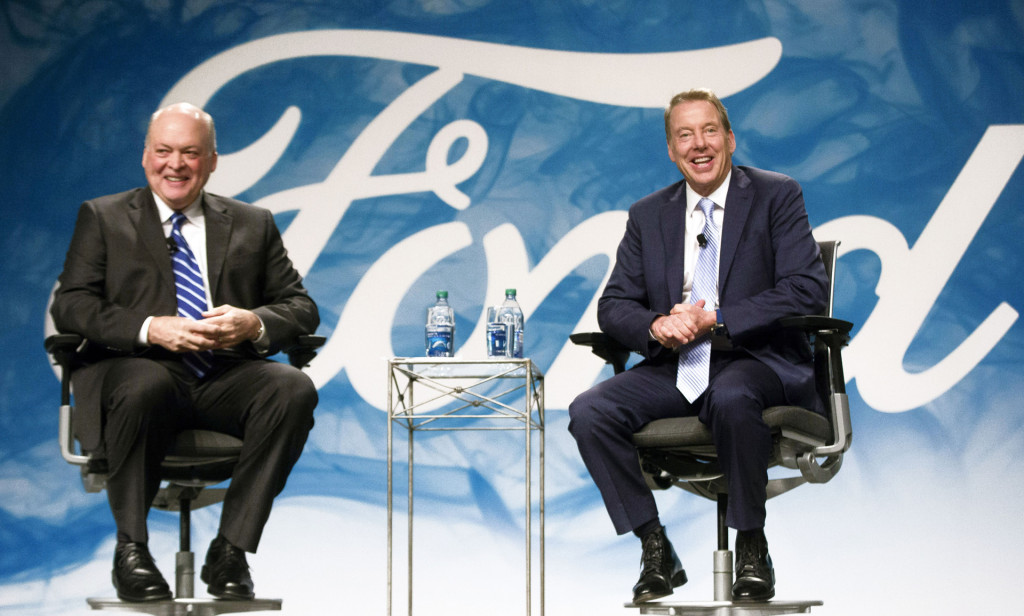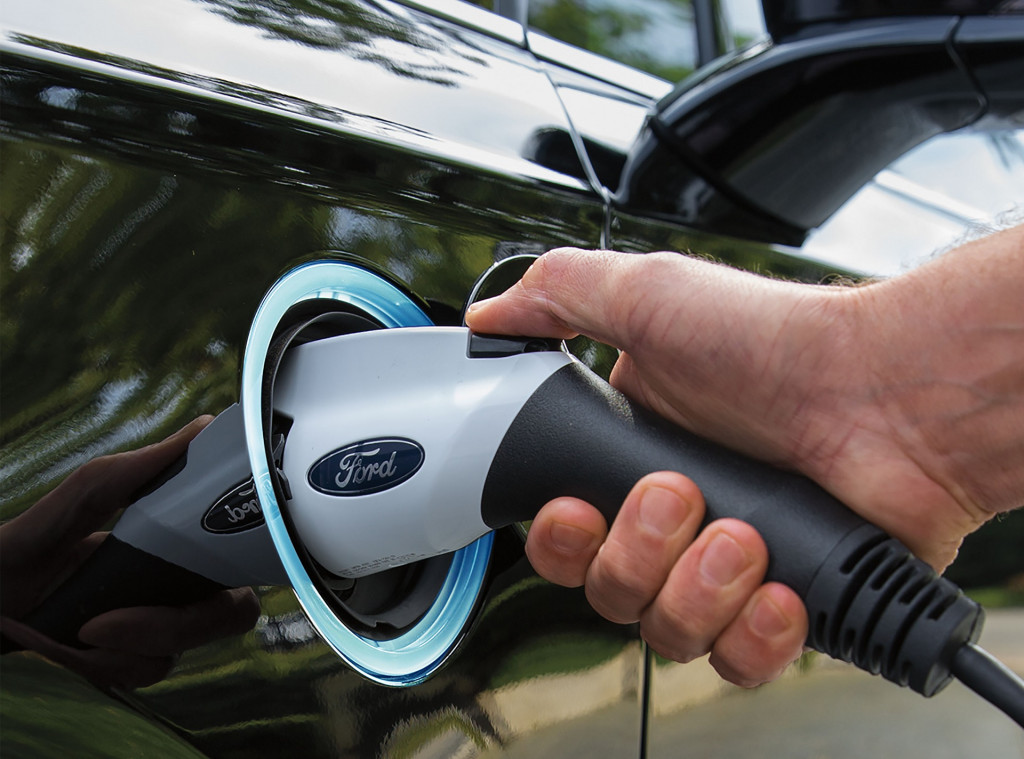As we start to look toward the 2019 model year, it's worth noting that Ford hasn't introduced a single new hybrid, plug-in hybrid, or electric vehicle since 2013.
In fact, the company is now clearing the decks and killing off old models.
The C-Max Energi plug-in hybrid tall hatchback went out of production a few months ago, and its Hybrid sibling will follow this spring or summer.
DON'T MISS: Ford plans 300-mile electric SUV, hybrid F-150 and Mustang (Jan 2017)
That will leave Ford with just the Fusion Hybrid and Energi plug-in hybrid sedans, the Lincoln MKZ Hybrid (without a plug-in variant), and the aging, low-volume Ford Focus Electric compliance car now in its seventh model year.
Granted, the company has routinely issued press releases about its plans for "13 electrified models," which it later clarified to mean hybrid, plug-in hybrid, or battery-electric vehicles.
And it's promised a "300-mile electric SUV" to arrive in 2020, as well as an F-Series Hybrid full-size pickup truck.

2018 Ford F-150 Outlaw WJ750
Some of those new models, however, are things like a Police Responder version of the Ford Fusion Hybrid or a low-volume range-extended electric Ford Transit van for European tests.
None of those notably moves the ball forward, and they underscore the striking lack of new electrified vehicles developed during the tenure of now-departed CEO Mark Fields.
They beg the question of what kind of electrified vehicle pipeline new CEO Jim Hackett inherited when he took over in May after Ford's board of directors canned Fields.
READ THIS: Ford fires CEO Fields, in part, for lagging on electric cars
At the time, one of the reasons suggested by outsiders for Fields' abrupt dismissal was his lack of planning for future electric vehicles. Ford has not commented on that suggestion.
In his seven months at the helm, Hackett has said relatively little about specific future models.
In October, he did say Ford would streamline product development, focus on more SUVs and fewer passenger cars, and cut funding for engines by one-third to focus on electrification and autonomous vehicles.

Jim Hackett (left) and Bill Ford Jr.
Analysts will be looking closely at whatever Ford launches at next month's Detroit auto show, which is expected to be heavy on trucks and SUVs.
But here's what we know so far about Ford and its plans for future plug-in electric vehicles: It's mostly about China.
A company press release on December 5, datelined Shanghai, said Ford plans to launch 15 new "electrified" vehicles in China by 2025, along with another 35 powered only by gasoline.
CHECK OUT: Most Fords will be hybrid or electric by 2025 ... in China
Ford chairman Bill Ford joined Hackett for the announcement, which included a nod to the company's August announcement of a joint venture with Chinese maker Zotye specifically for electric vehicles.
“From luxury Lincolns to Ford cars and SUVs, to an all-new electric vehicle brand, we will meet the growing desire and need in China for great new energy vehicles,” said Jason Luo, chairman and CEO, Ford China.
Lu promised not only that the new cars would be safe, efficient, and fun, but that they would also be "backed by an ecosystem that makes charging, sharing and servicing easy.”
The joint venture from Zotye and Ford, the release said, would "deliver a separate range of affordable all-electric under a new brand, pending regulatory approvals."

2018 Ford Fusion Energi
In the announcement, Ford—whose 1990 Explorer joined the Jeep Cherokee as a defining vehicle in what became the burgeoning SUV segment—stressed its plans for more SUVs in China.
Meanwhile, production of the all-electric Ford SUV was moved in December from its planned home in Flat Rock, Michigan, to a plant in Cuautitlan, Mexico, according to an internal memo obtained in early December by industry trade journal Automotive News.
The so-far unnamed vehicle, possibly to be sold as the Ford Model E, will go into production in the summer of 2020, presumably as a 2021 model-year launch.
Ford cited "business goals" in the memo, which likely translates to lower costs for a global vehicle that is likely to lose the company money, at least initially, and will likely be built in low volumes.
The Flat Rock plant, meanwhile, will house a dedicated autonomous vehicle to be sold under a new model name—Ford said only it's a hybrid sedan that isn't the mid-size Fusion—starting in 2021.

2018 Ford Fusion Energi
As for the Fusion, Reuters reported two weeks ago that the next generation of that mid-size sedan will be built in China rather than in Mexico and Spain, as the current generation is.
That report was not confirmed directly by the company, which said it did not intend to import future Fusions from China to the U.S. but that it would announce its plans for that car at a later date.
Under Hackett, the company has already said it will end domestic production of the Focus compact hatchback and sedan and move it to China.
Ford has said it plans to import future Focus models to the U.S. from China as part of a product reorganization that will deemphasize passenger sedans and hatchbacks and add more sizes and variants of SUVs and crossover utility vehicles.
What any future hybrid, plug-in hybrid, and battery-electric models for North America may be, and where they are built, remains largely opaque.
EDITOR'S NOTE: An earlier version of this article referred to "Ford chairman Henry Ford" joining Hackett; we meant, of course, his great-grandson Bill Ford, now the chairman. We thank our reader Jeffrey Fissel for pointing out the error, which we've corrected.
_______________________________________













